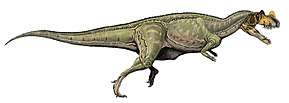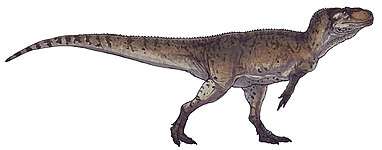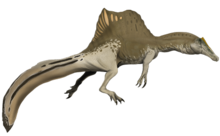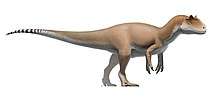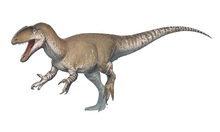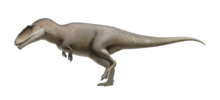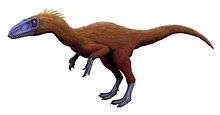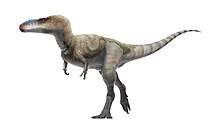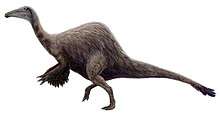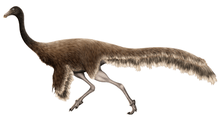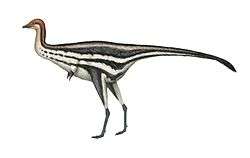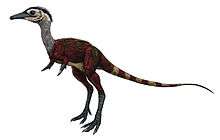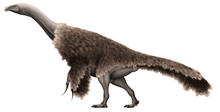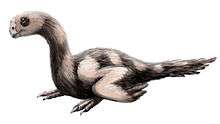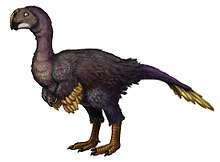Xiongguanlong
Xiongguanlong ("Grand Pass dragon") is a genus of tyrannosauroid dinosaur that lived in the Early Cretaceous of what is now China. The type species is X. baimoensis, described online in 2009 by a group of researchers from China and the United States, and formally published in January 2009. The genus name refers to the city of Jiayuguan, a city in northwestern China. The specific name is derived from bai mo, "white ghost", after the "white ghost castle", a rock formation near the fossil site. The fossils include a skull, vertebrae, a right ilium and the right femur. The rocks it was found in are from the Aptian to Albian stages of the Cretaceous, between 125 and 100 million years ago.[1]
| Xiongguanlong | |
|---|---|
| Mounted skeleton cast | |
| Scientific classification | |
| Kingdom: | Animalia |
| Phylum: | Chordata |
| Clade: | Dinosauria |
| Clade: | Saurischia |
| Clade: | Theropoda |
| Clade: | †Pantyrannosauria |
| Clade: | †Eutyrannosauria |
| Genus: | †Xiongguanlong Li et al., 2009 |
| Type species | |
| †Xiongguanlong baimoensis Li et al., 2009 | |
Description
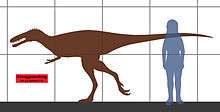
Xiongguanlong was a bipedal animal which balanced its body with a long tail, like most other theropods. It was intermediate in size between earlier tyrannosauroids from the Barremian and later tyrannosaurids from the Late Cretaceous, such as Tyrannosaurus, and has been estimated to weigh about 300 kilograms (660 lb). The vertebrae were more robust than in other basal tyrannosauroids, possibly to better support a big skull.[2] The skull had a long muzzle resembling that of Alioramus.[1]
Phylogeny
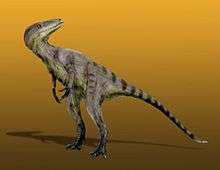

The describers concluded that Xiongguanlong split off from the main branch of the Tyrannosauroidea before Appalachiosaurus, being the sister taxon of a clade consisting of Appalachiosaurus and the Tyrannosauridae. It has been found to be closely related to Alectrosaurus.[3]
Below is a cladogram by Loewen et al. in 2013 including most tyrannosauroid species.[3]
| Tyrannosauroidea |
| |||||||||||||||||||||||||||||||||||||||||||||||||||||||||||||||||||||||||||||||||||||||||||||
See also
References
- Li, Daqing; Norell, Mark A.; Gao, Ke-Qin; Smith, Nathan D.; Makovicky, Peter J. (2009). "A longirostrine tyrannosauroid from the Early Cretaceous of China". Proceedings of the Royal Society B: Biological Sciences. 277 (1679): 183–190. doi:10.1098/rspb.2009.0249. PMC 2842666. PMID 19386654.
- Livescience: ”T. Rex Relative Fills Evolutionary Gap”, 22-4-2009.
- Loewen, M.A.; Irmis, R.B.; Sertich, J.J.W.; Currie, P. J.; Sampson, S. D. (2013). Evans, David C (ed.). "Tyrant Dinosaur Evolution Tracks the Rise and Fall of Late Cretaceous Oceans". PLoS ONE. 8 (11): e79420. doi:10.1371/journal.pone.0079420. PMC 3819173. PMID 24223179.
External links
- "Ancestor of T rex found in China" BBC News
- "Fossil evidence of a goldilocks tyrannosaur" ScienceNews.org
